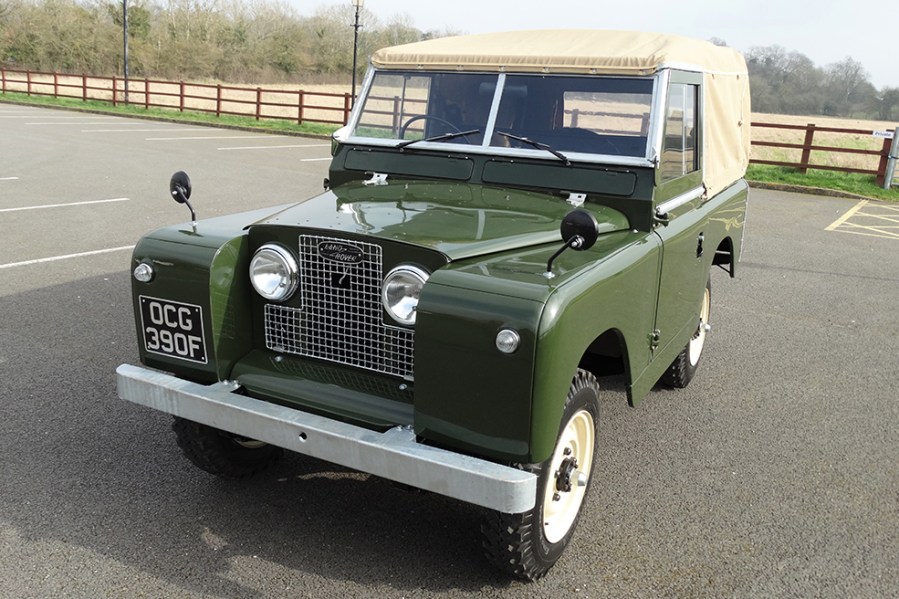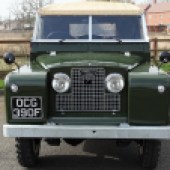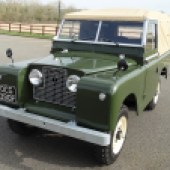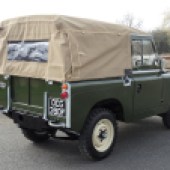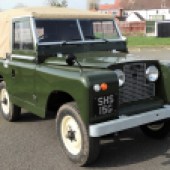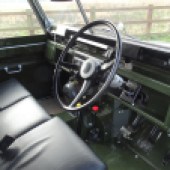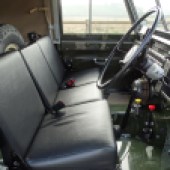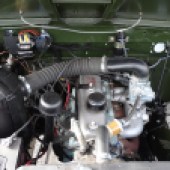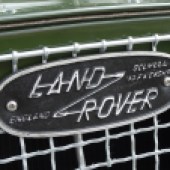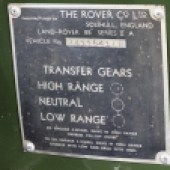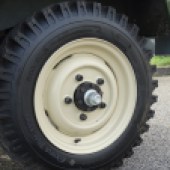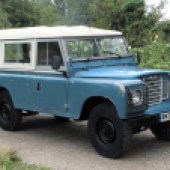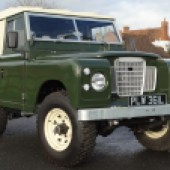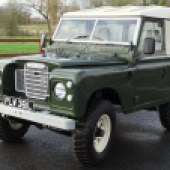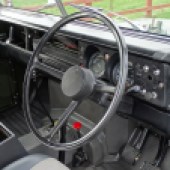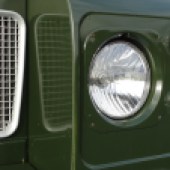Famed for being ultimate go-anywhere classics, the Land Rover Series II and III remain practical and rugged choices. Here’s how to buy one
Words: Chris Randall
It’s been nearly 80 years since the first Land Rover made its debut, a machine born from a sketch on an Anglesey beach and one that has remained a fixture of the motoring world ever since. Virtually unmatched in looks and capability, its appeal has never diminished – and a classic Landy is as sought-after today as it has ever been.
It’s the second and third generations we’re concerned with here. The Series II arrived in 1958, bringing subtle styling tweaks and a choice of tough petrol and diesel engines. Just three years on, continued development produced the Series IIA, which ultimately gained larger, more potent engines and features such as servo-assisted brakes. The formula proved so successful that this generation saw the production of the 500,000th Land Rover.
The Series III followed in 1971, its most notable updates including a conventional plastic dashboard in place of the plain metal panel and the option of the Buick-derived 3.5-litre V8. There was even an effort to offer greater comfort and on-road civility with the County station wagon. By the time the Series III was retired in 1985, replaced by the coil-sprung 90 and 110, around 440,000 examples had been built.
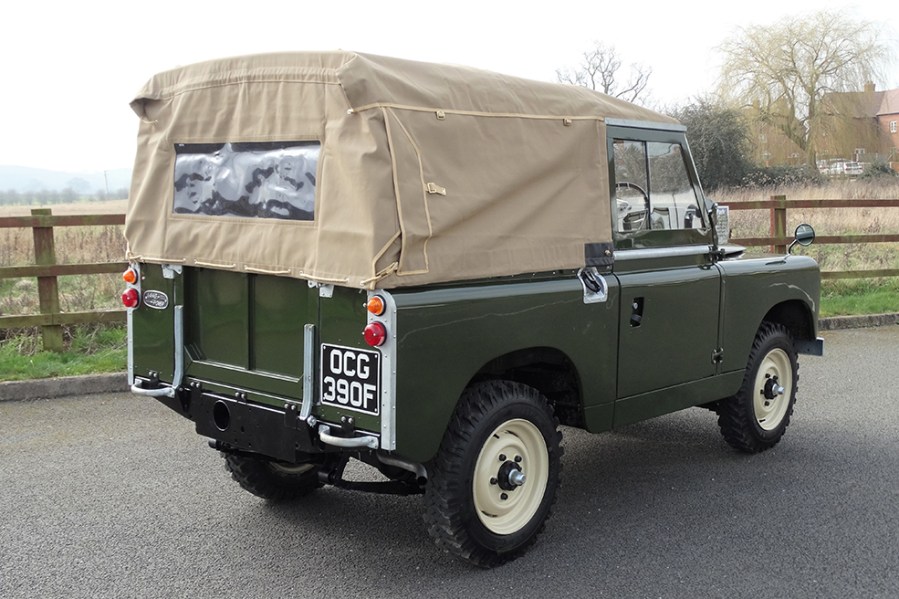
Land Rover Series 2 & 3 values
Land Rover Series II and III prices continue to rise; even a restoration basket case will still set you back a couple of thousand pounds or so. A Series 2 in only reasonable condition is heading for £10,000, with a good one comfortably into the mid-teens; and you’ll need to budget from £24,000-£35,000 for anything classed as excellent or concours.
The Series IIA isn’t all that much cheaper, which makes the Series III the most affordable of the bunch – although even then there aren’t really bargains to be had. It’s still £15,000-£17,000 for something in nice, usable condition, with the very best topping out at around the £25,000 mark.
Age doesn’t have a marked effect on values – nor whether it’s an 88- or 109-inch model – so if your heart is set on owning one, it’s condition and provenance that matters above anything else.
Insurance Costs
1974 Land Rover Series III 88-inch 2.25, £12,000 value
Example quote: £109.97 or £127.97 with Agreed Value.
Quotation supplied by Lancaster Insurance. Tel: 01480 400761
Quote based on a 45-year-old marketing manager, access to another car, no claims or convictions, club member, 3000 miles per year, no modifications, living in SP2 0HL. Disclaimer: Subject to underwriting criteria. An additional charge may be payable. Authorised and regulated by the Financial Conduct Authority.
Bodywork
We’ll come to the bodywork in a moment, as the more serious and costly troubles on these Land Rovers often lurk underneath. The chassis demands a very careful inspection, with key areas including the front dumb irons, spring hangers, rear crossmember and body mounting points, plus the outriggers. These can be replaced individually if the remainder is sound, and plenty of repair sections are available from specialists; however, if the chassis is too far gone, a galvanised replacement will cost roughly £2000. As you’d expect, it’s not a quick job to swap, so unless you’re keen on taking on a project, it’s wise to seek out another vehicle.
Another time-consuming and expensive fix involves the front bulkhead, so examine it thoroughly for corrosion; a replacement panel is around £2000 and again requires a significant amount of work to fit. Higher up, the Birmabright alloy panels should be checked for galvanic corrosion where they meet steel sections, and you’ll also want to inspect for rot in the steel door frames, footwells, inner wings, A-pillars and the radiator/headlamp panel. You can find a replacement for the latter from around £250, while a complete door with glass is about £200. This generation of Land Rover is well supported with panels and repair sections, though extensive restoration can quickly become expensive.
It’s also worth noting the originality of the Land Rover you’re viewing, as the ease of swapping parts can complicate things. Many enthusiasts care about authenticity, so it’s sensible to seek guidance from an expert to ensure the example you’re considering is genuinely what it claims to be.
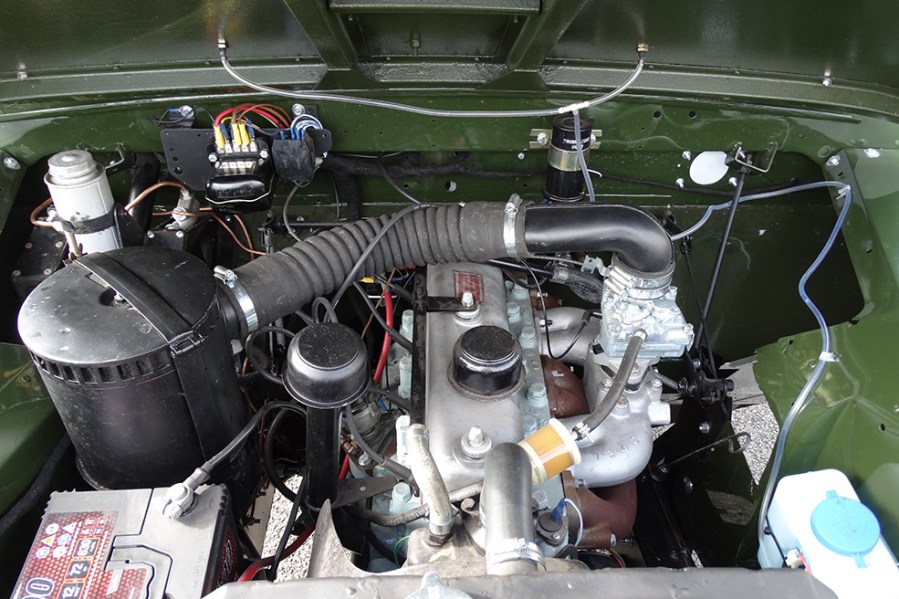
Engine and transmission
Early Series II models carried over the 2.0-litre engine from the Series I, although the later 2.25-litre petrol unit is the more appealing option for most owners. The IIA also gained a 2.25-litre diesel, along with a 2.6-litre petrol. Provided none of these motors has been badly neglected, all are capable of racking up high mileages before requiring a rebuild. And when that time does come, strong parts supply and straightforward engineering mean overhauls are generally uncomplicated.
The five-bearing engines introduced with the Series III were smoother and more dependable still. Even so, you’ll want to watch for oil leaks, evidence of overheating and excessive exhaust smoke. A particularly smoky diesel may be suffering from tired injectors or a worn fuel pump, while the early 2.0-litre diesel can also encounter cracked cylinder heads or head gasket failures.
Another noteworthy engine arrived with the Series III: the 3.5-litre V8, which delivered far better refinement and performance. Thanks to its widespread use, sourcing parts and expertise is easy. The main concerns are ensuring oil changes haven’t been skipped (every 3000 miles is ideal), the head gaskets remain sound, and the cooling system is in good order.
One final engine consideration is the possibility of fitting a later Land Rover unit, though this won’t appeal to those keen on originality. As for the gearbox, the four-speed manual is robust, but you should still check for weak synchromesh, worn bearings, any tendency to jump out of gear, or difficult gear selection. Oil leaks are another common irritation, and the transfer box and axles can suffer similarly. A test drive should also reveal any excessive vibration caused by worn propshaft joints.
An overdrive is a worthwhile upgrade, making a noticeable difference on longer runs. Used Fairey units start at around £500, while Simmonites will sell you a full overdrive kit, but it’ll run you £3500, plus VAT, plus fitting…

Suspension, steering and brakes
There’s nothing complex about the suspension, which employs leaf springs at both ends. The main worry is corrosion around the mounting points, though it’s also wise to confirm the springs themselves haven’t sagged or rusted. Replacements are straightforward to fit and new items can be bought for under £150 apiece. Ageing or leaking dampers are similarly easy and inexpensive to sort, and there’s room to upgrade to superior units.
Given the vehicle’s utilitarian design, you’d likely expect the braking system to be equally uncomplicated — and you’d be correct. The drum brakes all round are perfectly adequate if they’re serviced and adjusted properly, so inspect the system for seized or corroded parts and for any leaks from the pipework, master cylinder or wheel cylinders. Checking everything at each service is sensible, and parts are both cheap and readily available should an overhaul be required. Front disc conversions are possible, but not really essential. Make sure the handbrake operates as it should, too.
Precise, pin-sharp steering was never part of the Land Rover experience, but you should watch for excessive free play. If the steering box isn’t excessively worn, a repair kit may be enough (costing under £20), but a replacement unit will set you back £400 or more.
Lastly, examine the condition of the front swivel hubs, as these can suffer from pitting and corrosion, though replacement isn’t expensive. Also listen for noisy wheel bearings; they’re simple to change but must be fitted correctly, as failing to seat the tab washer properly will cause them to work loose.

Interior and trim
These vehicles are about as basic as they come inside. A ‘Series’ Land Rover offers virtually no creature comforts, but the upside is that assessing its interior takes very little time. You’re essentially checking for general wear and tear, along with tired, threadbare seats that are due for replacement. A fresh set of vinyl covers will cost £150-£250.
Cracked or damaged dashboard plastics on a Series III aren’t a major issue, as used replacements are readily available online. Don’t be surprised if water has made its way into the cabin; it’s sensible to trace the source, as moisture won’t do the trim or electrics any good. Speaking of electrics, the system is very straightforward, so ensure the instruments and switchgear function correctly. The same applies to the exterior lights, where most faults stem from poor earths or corroded connectors.
Because the wiring is so simple, owners may be tempted to carry out their own repairs or alterations, so check that any such work has been done to a safe standard; if not, a complete new loom is relatively inexpensive at £250-£300. Lastly, inspect the condition of the canvas hood on short-wheelbase versions – a new one will be around £400.

Land Rover Series II & III: our verdict
The fact that these vehicles remain so highly sought after more than 60 years since their debut says a great deal about their truly distinctive appeal. They may be rather crude to drive, yet their near-unmatched go-anywhere capability and straightforward construction continue to attract enthusiasts – as does the ease with which they can be serviced and repaired. The extensive network of knowledgeable clubs and specialists also ensures that ownership is far less stressful than with more complicated classic cars.
The only real drawback is the driving experience of a Series II or III. While the lack of refinement shouldn’t really come as a shock, it’s still worth confirming that you can live with it. You’ll either adore it or loathe it, but if you fall into the former category, one of these ‘Series’ Land Rovers is quite likely to become a vehicle you’ll never wish to let go.
Timeline
1958
10 years after the original Land Rover, the Series II launches at the Amsterdam Motor Show. Revised bodywork includes deeper sills, and there’s a new 2.25-litre petrol engine.
1961
The Series IIA is hard to distinguish from the II, but among the changes is a 2.25-litre diesel engine.
1967-1969
Updates include the addition of a 2.6-litre petrol engine for LWB models and servo-assisted brakes. The headlamps move to the front wings in 1969.
1971
The Series III is launched – and while the looks are familiar, there’s a new plastic grille and all-synchro gearbox.
1979
The 3.5-litre V8 is available for the first time. Detuned from its Range Rover application, it still provides a notable boost in power and performance.
1982
Looking to appeal to ‘lifestyle’ buyers, the County Station Wagon boasts ‘luxuries’ such as cloth seats and better soundproofing.
1985
Series III production ends after 440,000 have been made.

